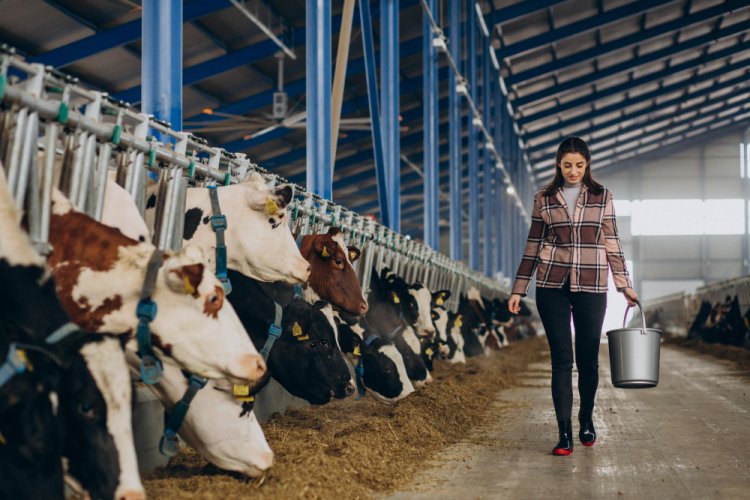Brucellosis: A Comprehensive Overview of a Persistent Zoonotic Disease
Brucellosis, caused by bacteria of the genus Brucella, is a significant zoonotic disease affecting both animals and humans worldwide. Commonly known as Malta fever, undulant fever, or Mediterranean fever, brucellosis poses substantial public health challenges and economic burdens in regions where livestock farming is prevalent. This article provides an in-depth exploration of the etiology, epidemiology, pathogenesis, clinical manifestations, diagnosis, treatment, and prevention strategies associated with brucellosis.

Etiology and Pathogenesis:
Brucellosis is caused by small, gram-negative, non-spore-forming coccobacilli belonging to the genus Brucella. These bacteria have a remarkable ability to survive and replicate within host cells, particularly macrophages, by employing sophisticated mechanisms to evade the host immune response. Upon infection, Brucella spp. can establish chronic intracellular infections, leading to persistent bacteremia and dissemination to various organs, including the reproductive system, joints, liver, spleen, and central nervous system.
Epidemiology and Transmission:
Brucellosis primarily affects domestic livestock such as cattle, goats, sheep, pigs, and dogs, although wild animals can also serve as reservoirs for the bacteria. Human infection occurs through direct or indirect contact with infected animals or their products, including consumption of unpasteurized dairy products, inhalation of contaminated aerosols, or contact with infected tissues during animal husbandry activities. Occupational exposure poses a significant risk to individuals involved in livestock farming, veterinary medicine, and meat processing industries.
Clinical Manifestations:
The clinical presentation of brucellosis in humans varies widely, ranging from acute febrile illness with nonspecific symptoms to chronic debilitating conditions. Common symptoms include fever, sweats, fatigue, malaise, headache, joint and muscle pain, and loss of appetite. Severe cases may lead to complications such as endocarditis, arthritis, meningitis, or neurobrucellosis, which can result in long-term morbidity and mortality if left untreated.
Diagnosis:
Diagnosing brucellosis can be challenging due to its nonspecific clinical presentation and the lack of distinctive features. Laboratory tests play a crucial role in diagnosis, including blood cultures, serological assays (such as ELISA), and molecular techniques (such as PCR). Serological testing for specific antibodies against Brucella antigens remains the cornerstone of brucellosis diagnosis, although culture-based methods are essential for confirming the infection.
Treatment and Management:
The management of brucellosis typically involves antimicrobial therapy, with combinations of antibiotics such as doxycycline and rifampin or doxycycline and streptomycin administered for several weeks to months. However, treatment outcomes can be variable, and relapses are not uncommon, necessitating prolonged therapy and close monitoring. Management strategies also include symptomatic relief, supportive care, and addressing complications associated with the disease.
Prevention and Control:
Preventing brucellosis relies on comprehensive control measures aimed at reducing transmission from animals to humans. Key strategies include vaccination of susceptible livestock populations, implementation of strict hygiene practices in food production and processing, pasteurization of dairy products, and public education campaigns to raise awareness about the risks associated with consuming raw or unpasteurized products. Enhanced surveillance, early detection, and prompt treatment of cases are essential for preventing outbreaks and minimizing the spread of the disease.
Conclusion:
Brucellosis remains a persistent threat to public health and livestock industries globally, emphasizing the need for concerted efforts to control and prevent its spread. By understanding the complex interplay between humans, animals, and the environment, implementing effective control measures, and promoting interdisciplinary collaboration, we can mitigate the burden of brucellosis and safeguard both human health and agricultural economies.
#Brucellosis #ZoonoticDisease #PublicHealth #LivestockFarming #AnimalHealth #OneHealth #Epidemiology #InfectiousDisease #HealthAwareness #PreventiveMedicine #GlobalHealth #VeterinaryMedicine #HealthEducation #AntimicrobialResistance #DiseaseControl #HealthcareManagement
Disclaimer:
The information provided in this article is for educational purposes only and should not be considered medical advice. If you have any health concerns or are experiencing symptoms, it is important to consult with a healthcare professional, such as a doctor or clinic, for proper diagnosis and treatment. Always seek the advice of your doctor or other qualified health provider with any questions you may have regarding a medical condition. Do not disregard professional medical advice or delay in seeking it because of something you have read in this article.
What's Your Reaction?





















